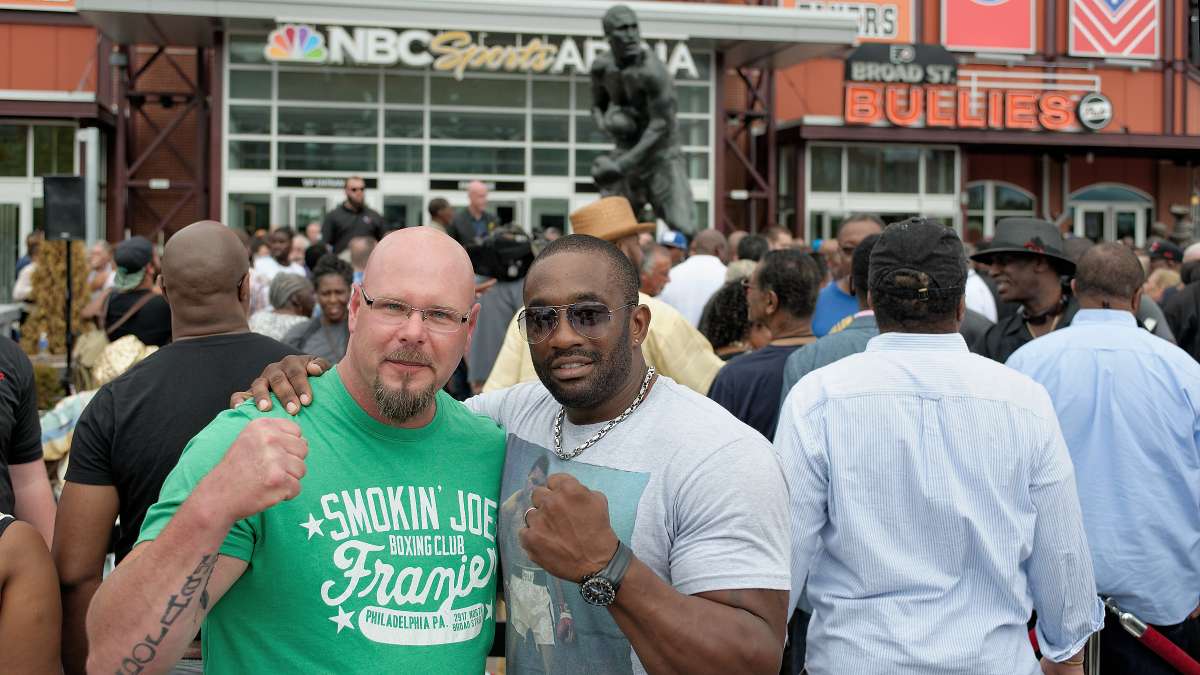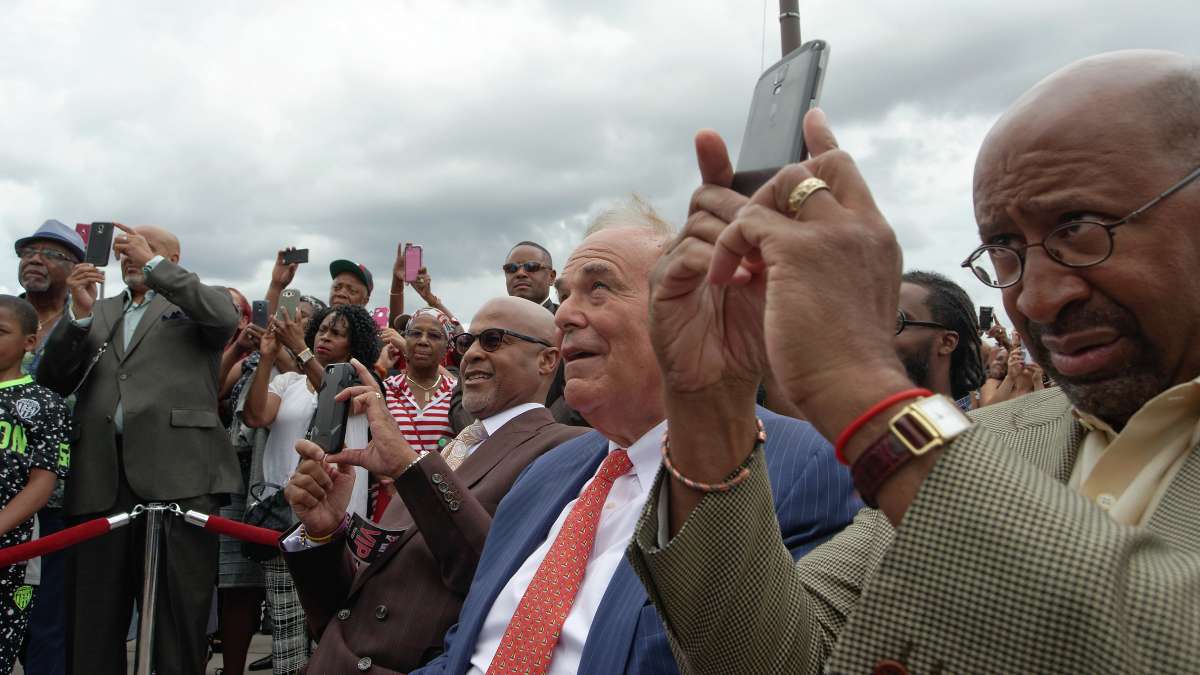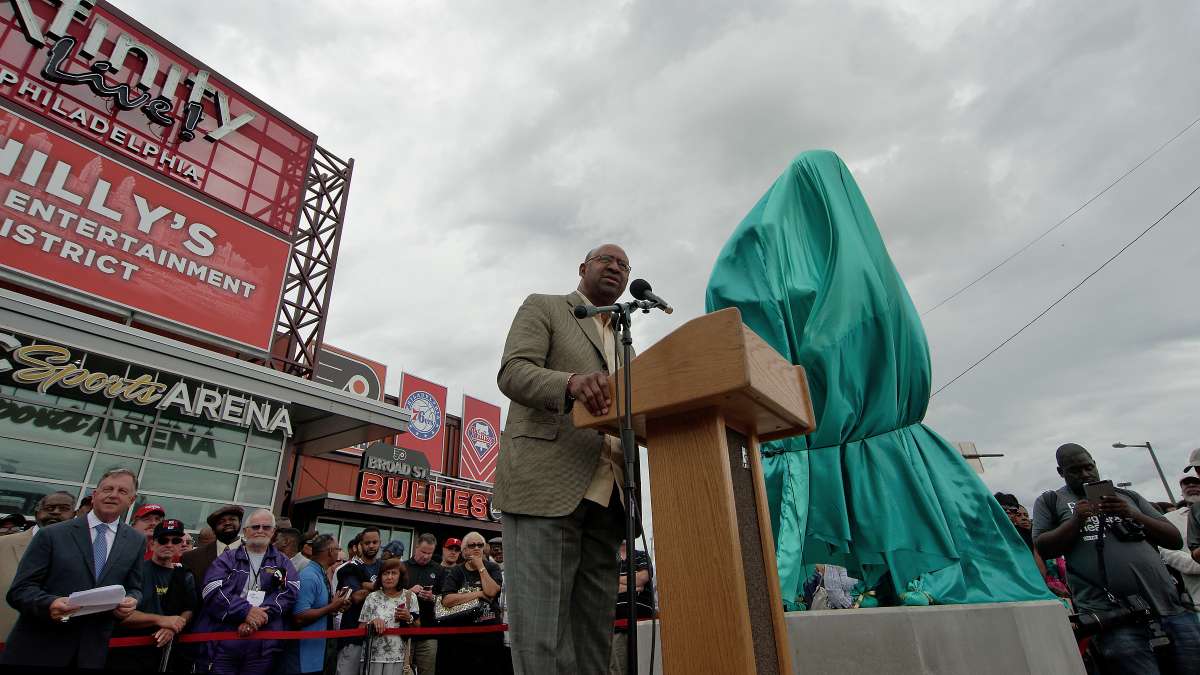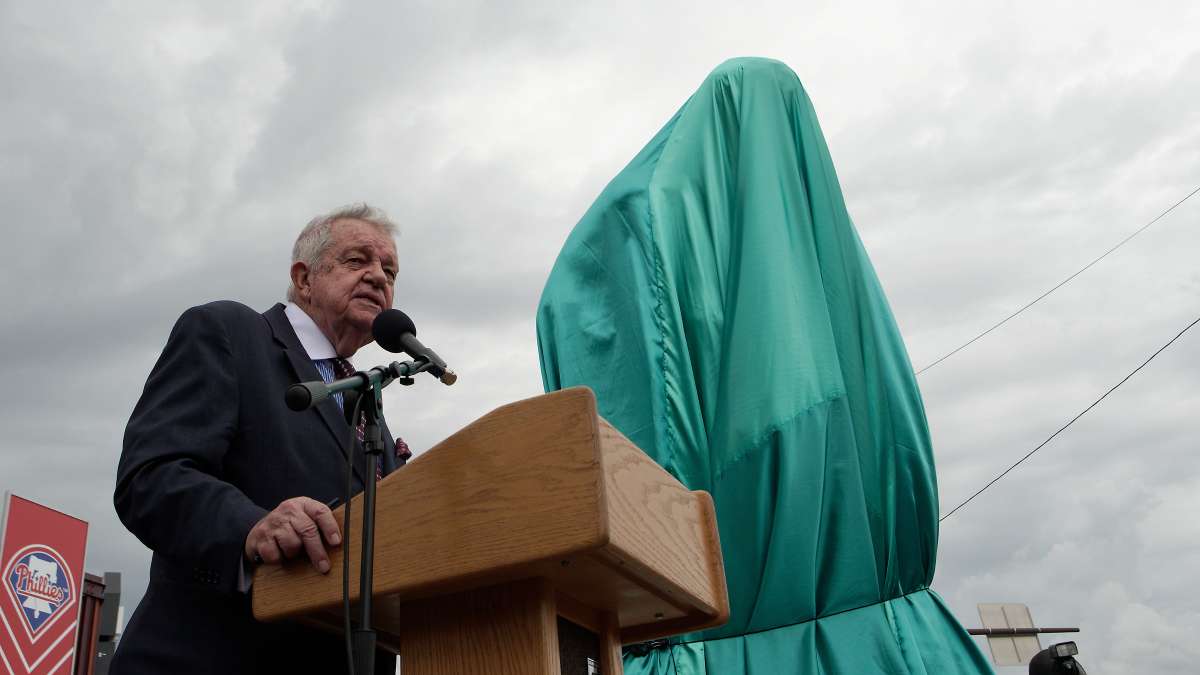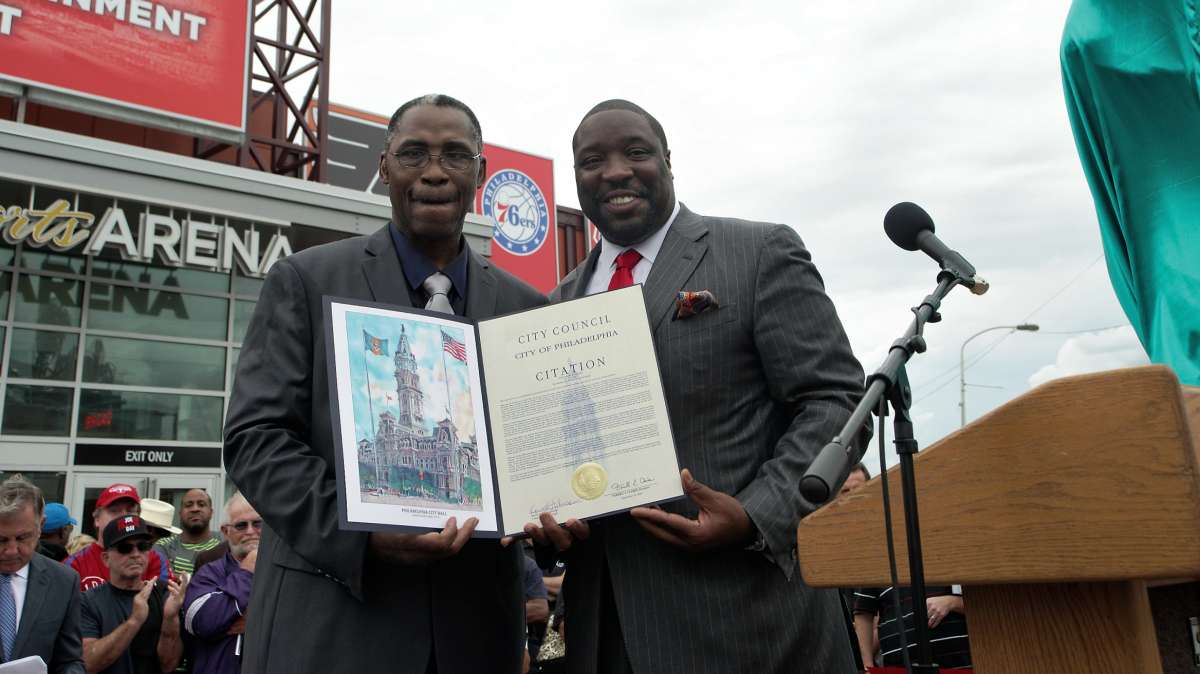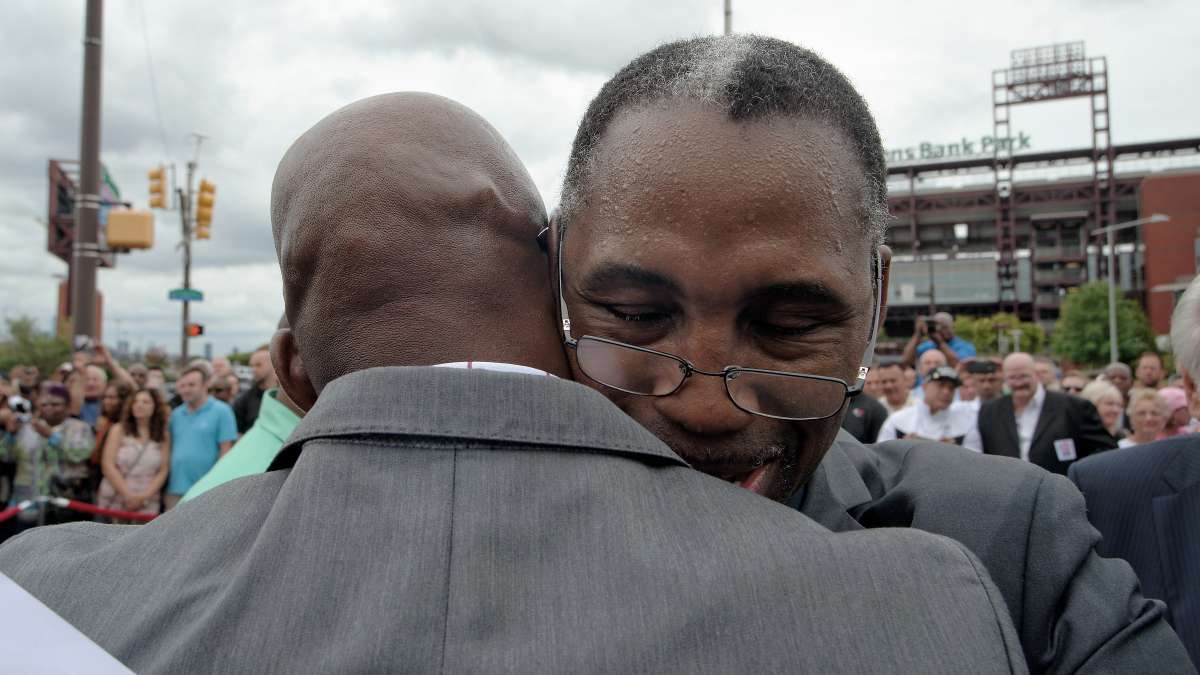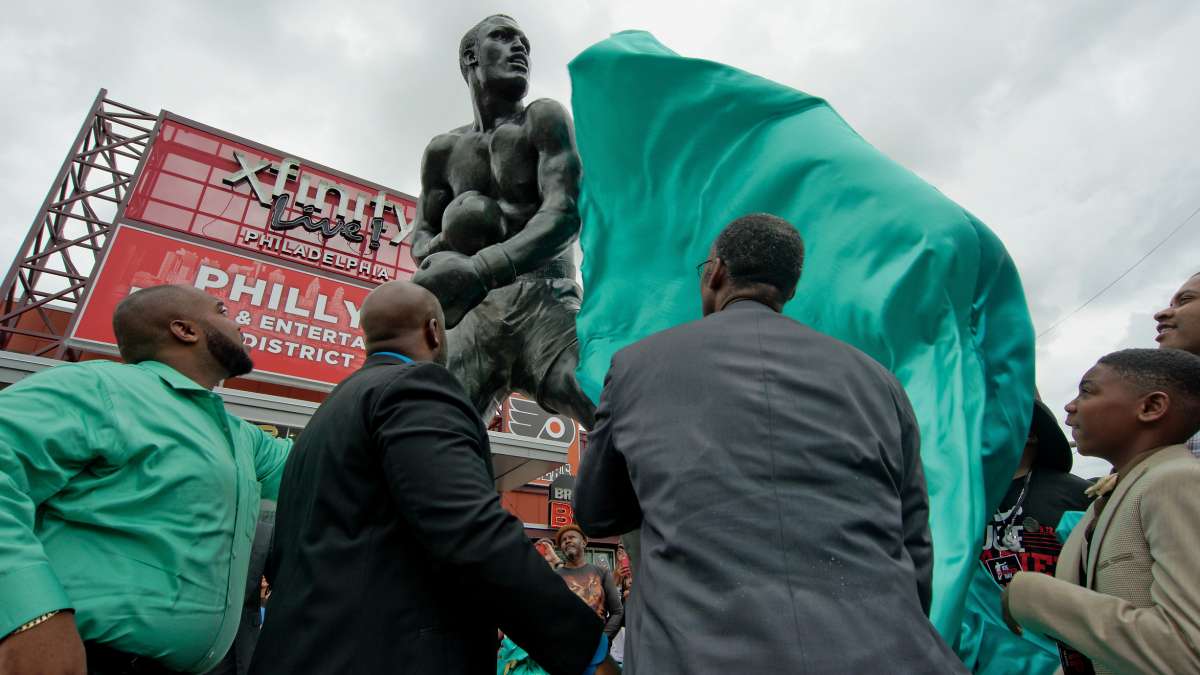Philadelphia (finally) honors legendary non-fictional boxer Smokin’ Joe Frazier with a statue
Editor’s note: Now that the city has done right by Smokin’ Joe Frazier, who should be immortalized in Philadelphia’s next statue?
Finally.
Philadelphia, a city that has long embraced the civic personality of a fictional boxer, is finally home to a statue honoring the career, and memory, of a hometown pugilist known best internationally for dropping Muhammad Ali to the canvas during the course of his illustrious career.
On Saturday, a nine-foot, bronzed likeness of late heavyweight champion of the world Smokin’ Joe Frazier emerged from under a Tiffany blue-ish tarp down in South Philadelphia’s stadium district, seven Broad Street miles away from the boxer’s namesake gym which is now a furniture store.
The Frazier-statue reveal, physically led by sculptor Stephen Layne as the late boxer’s family stood before it, was met by thunderous applause by hundreds in attendance outside Xfinity Live, and a blessing.
The hour-long ceremony, emceed by longtime Philly-sports PA announcer Dan Baker, featured a memorializing 10-bell count for Frazier and late boxing writer Stan Hochman, who for years led the charge to honor the fighter.
Giving speeches before the unveiling were Frazier’s son Marvis, Mayor Michael Nutter, former mayor and Gov. Ed Rendell, promoter/friend Joe Hand Sr. and, among others, former Ali confidant Gene Kilroy.
“This is a statue to have your photo taken next to. You can do the one up on the Parkway, too. Do both,” Nutter said, referring to the Rocky Balboa monument near the Philadelphia Museum of Art.
“This is a real fighter, a real person,” Nutter continued, celebrating the fact that Frazier was a replacement Olympian who won gold in 1964 and went on to a legendary career in the ring. “Quite honestly, that movie, that series, could have just as easily been named ‘Joe’ and it would be the same. It would be great. It would be about somebody who actually did something in this city, in this country and in this world.”
Marvis Frazier, Smokin’ Joe’s pugilistic son, spoke of gratitude for something that most in attendance thought should have occurred long ago.
“It took a little while, but it’s here,” said Marvis Frazier. “The Frazier family says ‘thank you.'”
For his part, Hand marveled at the similarity between the statue and the person it represents, namely the fact that both are “larger than life [representing] triumph over adversity.”
Said Rendell, “We will never see the likes of Joe Frazier again. If you’re looking for a role model, it’s not the guy on the Parkway: This guy [Frazier] is your role model.”
Bernard Hopkins, a champion boxer who carved out a spot among Philly boxing royalty, said people could take life lessons left behind by Frazier and incorporate them into their own lives.
“When your legacy is finished, woman or man, you took a page out of a person that was on this Earth who made a big, big message clear in time: That’s what’s motivated me over the years, from Joe and other people,” he said. “What I took out of today was not only homage, but also taking the good that we’ve known and heard about.”
The fact that Frazier didn’t get to see this statue in life wasn’t missed on Hopkins, who refused to guess what Smokin’ Joe would be thinking about the event since he can’t communicate with the dead.
“Philadelphia was late on the draw,” Hopkins said. “You can say better late than never, but you can never forget that the statue, just because of the deeds of Joe, should have been [sculpted] a long time ago.
“My mother used to always say give her the flowers while she’s living so she can smell them. All these people buy flowers off emotions when the dead can’t even smell ’em.”
The back story
Frazier died after a battle with liver cancer in Nov. 2011. Though the lack of a statue stung him in life, the calls for one grew stronger at, and after, his “Homegoing Celebration” at Northwest Philadelphia’s Enon Tabernacle Baptist Church.
“Tell them Rocky was fictitious. Joe was reality,” the Rev. Jesse Jackson said from the pulpit while eulogizing Frazier. “Rocky’s fists are frozen in stone. Joe’s fists were smokin’. Rocky never faced Ali or Holmes or Norton or Foreman. Rocky never tasted his own blood. … Joe Frazier deserves a statue in downtown Philadelphia.”
Less than a year later, city officials announced a $150,000 fundraising effort that would ideally commission a Frazier statue, and cover its preservation and upkeep.
After a slow start, of which Hopkins took notice, funds poured in via events and donations.
By April 2013, after seeing several proposals, Frazier’s family members selected the work of Lawrence J. Nowlan, an Overbrook native who created the Harry Kalas Memorial Statue at Citizens Bank Park (honoring the former Phillies play-by-play announcer). Layne’s proposal was the runner-up in that process.
Four months later, though, Nowlan passed away at the age of 48 without having completed his vision.
In Dec. 2013, the Philadelphia Arts Commission approved Layne’s plan for the statue that finally found a home on the grounds where the Spectrum — a since-demolished building that Frazier christened with a 1967 fight against Tony Doyle — once stood.
Layne then got to work on the nine-foot, 400-pound statue at his second-floor Frankford Avenue art studio.
He said the statue, which was bronzed downstairs from his studio, was inspired by the pose Frazier struck after knocking Ali down to the canvas with a powerful left hook in 1971’s “Fight of the Century I.”
And now, finally, that left-hook pose will greet people heading down to the South Philly stadia, and maybe catch the attention of cameras when the teams play nationally televised games.
WHYY is your source for fact-based, in-depth journalism and information. As a nonprofit organization, we rely on financial support from readers like you. Please give today.



